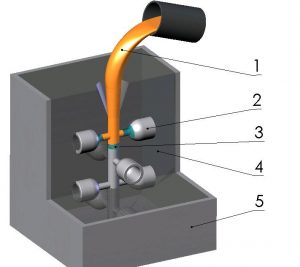
Lost-foam and full-mold casting are two of the most popular types of evaporative-pattern casting. They both involve the use of pattern that, when exposed to heat, evaporates. The pattern material essential vaporizes while filling the surrounding space in the mold cavity. With that said, lost-foam and full-mold casting are two different casting processes with their own unique characteristics.
What Is Lost-Foam Casting?
Lost-foam casting is a type of evaporative-pattern casting that’s characterized by the use of a foam pattern. To perform lost-foam casting, manufacturing companies begin by creating a mold of polystyrene foam. Next, molten metal is poured into the foam mold. The heat from the molten metal causes the foam mold to vaporize and fill the die.
What Is Full-Mold Casting?
Full-mold casting, on the other hand, is a type of evaporative-pattern casting that’s characterized by the use of a wax mold. Like with lost-foam casting, it also uses a polystyrene foam mold that, when exposed to heat, vaporizes to fill the mold. The difference between these two evaporation-casting processes is that full-mold casting includes sand as well. With full-mold casting, the foam pattern is surrounded by sand. When molten metal is poured into the mold, the pattern vaporizes and hardens on the sand.
The pattern used in lost-foam casting consists entirely of foam, which is placed inside of a mold. The pattern used in full-mold casting consists of the same foam pattern, but it’s surrounded by sand that separates it from the mold. When molten metal is poured into the mold, the foam pattern vaporizes and, therefore, fills the mold’s cavity. The casting is then allowed to cool, typically at room temperature, after which it’s removed.
Advantages of Lost-Foam Casting
Lost-foam casting is preferred by many manufacturing companies because of its ability to create accurate, precise castings without any draft or parting lines. Lost-foam casting also requires fewer steps to perform than many other casting processes, including full-mold casting.
Advantages of Full-Mold Casting
Full-mold casting offers an inexpensive and effective way for manufacturing companies to create castings. It’s cheaper than other casting processes because it uses foam patterns. Full-mold casting also supports detailed and complex castings..
Lost-foam casting and full-mold casting are two common forms of evaporative-pattern casting. They involve the use of a pattern made of an evaporative material. The difference is that lost-foam casting uses a foam pattern that’s surrounded by sand, whereas full-mold casting does not.
